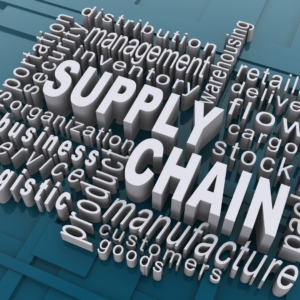The Critical Impact of Supply Chain Visibility on Modern Businesses
In today’s hyperconnected global marketplace, limited supply chain visibility represents one of the most significant challenges facing organizations. These information black holes (areas where critical data disappears or becomes inaccessible) can severely impact operational efficiency, financial performance, and customer satisfaction. Understanding and addressing visibility issues has become essential for companies seeking competitive advantage in increasingly complex distribution networks.
The supply chain visibility challenge occurs when organizations lose sight of products, materials, or information as they move through the supply chain. This opacity creates blind spots that prevent informed decision-making and rapid response to disruptions. According to a comprehensive report by McKinsey & Company, companies with significant visibility challenges experience 30% higher inventory costs and 24% longer order fulfillment times than those with robust visibility solutions (McKinsey & Company, “Supply Chain 4.0: The Next-Generation Digital Supply Chain,” 2024).
For executives and supply chain professionals, improving supply chain visibility isn’t just about implementing new technologies—it requires a strategic approach to information management across the entire value chain. This blog explores how to identify, measure, and eliminate these costly information black holes.
Recognizing the Signs of Supply Chain Visibility Problems
Before implementing solutions, organizations must first accurately diagnose where and how their supply chain visibility problems manifest. The most common indicators include:
- Unexpected Stockouts and Overstock Situations: When inventory counts don’t match reality, it often signals a visibility challenge in inventory tracking and management. These discrepancies can occur at any point in the supply chain, from manufacturing to distribution.
- Extended Order-to-Delivery Timeframes: If customers regularly experience delays not explained by standard logistics timeframes, there’s likely a visibility issue preventing accurate delivery predictions.
- Reactive Rather Than Proactive Problem-Solving: Teams constantly “fighting fires” rather than preventing issues indicates insufficient visibility into developing supply chain problems.
- Inconsistent Performance Metrics: When KPIs vary significantly between departments or business units without clear explanation, information silos are creating visibility challenges.
- Customer Complaints About Status Updates: Customer service teams fielding frequent “where is my order” inquiries suggests visibility issues that extend beyond internal operations to customer communications.
Visibility challenges often grow incrementally, starting as small information inconsistencies that compound over time. By the time significant operational issues emerge, the underlying visibility problems may have become deeply entrenched in business processes.
Measuring the Financial Impact of Limited Supply Chain Visibility
Limited supply chain visibility carries substantial financial consequences that directly impact the bottom line. Quantifying these costs helps justify investments in visibility solutions.
Direct Costs of Limited Supply Chain Visibility:
The most immediate costs stem from operational inefficiencies:
- Excess Inventory Carrying Costs: Without clear visibility, companies typically overcompensate with safety stock, increasing holding costs by 20-30%.
- Expedited Shipping Expenses: Organizations with significant visibility challenges spend an average of 15% more on premium freight to compensate for unexpected delays.
- Labor Inefficiencies: Staff hours spent tracking down information, reconciling data discrepancies, and managing exceptions often account for 20-25% of supply chain administrative costs.
Strategic Costs of Poor Supply Chain Visibility:
Beyond immediate operational expenses, the supply chain visibility gap undermines strategic business objectives:
- Lost Sales Opportunities: Companies with superior supply chain visibility capture an estimated 3-7% additional market share by consistently meeting customer expectations.
- Damaged Brand Reputation: In an era where consumers expect transparency, visibility gaps that result in customer disappointment can diminish brand equity.
- Inability to Optimize: Without end-to-end visibility, organizations cannot identify systemic inefficiencies or opportunities for improvement.
A comprehensive visibility analysis should include both quantitative metrics (like inventory carry costs and expedited shipping expenses) and qualitative assessments (such as customer satisfaction impact and brand perception).
Technology Solutions to Bridge the Supply Chain Visibility Gap
Modern technology offers powerful tools for closing the supply chain visibility gap. Implementing the right technology stack is essential for creating transparent information flows throughout the supply network.
Integrated Data Platforms
The foundation of supply chain visibility comes from connecting disparate data sources. Enterprise Resource Planning (ERP) systems integrated with specialized Supply Chain Management (SCM) platforms provide the backbone for information flow. These systems must bridge visibility challenges by creating a single source of truth accessible to all stakeholders.
IoT and Real-Time Tracking
Internet of Things (IoT) sensors and tracking devices have transformed supply chain visibility by providing real-time location and condition monitoring. These technologies help eliminate blind spots by creating continuous data streams that reveal:
- Precise inventory locations and movements
- Environmental conditions affecting perishable goods
- Equipment status and performance metrics
- Early warning signs of potential disruptions
Organizations that have deployed comprehensive IoT tracking report reducing their visibility challenges by up to 65%, with corresponding improvements in on-time delivery performance and inventory accuracy.
Advanced Analytics and AI
The massive data volumes generated across supply chains require sophisticated analysis to yield actionable insights. Advanced analytics and artificial intelligence help improve supply chain visibility by:
- Identifying patterns and anomalies indicating potential disruptions
- Predicting demand fluctuations with greater accuracy
- Optimizing inventory placement throughout the network
- Suggesting route adjustments based on real-time conditions
Companies leveraging AI-powered visibility solutions have improved their supply chain transparency while simultaneously decreasing inventory levels by 15-20% and improving forecast accuracy by 25-30%.
Organizational Strategies to Eliminate the Supply Chain Visibility Gap
Technology alone cannot solve supply chain visibility challenges. Organizational structures, processes, and culture must evolve to support transparent information sharing.
Cross-Functional Visibility Teams
Creating dedicated teams responsible for monitoring and improving supply chain visibility can accelerate progress. These cross-functional groups should include representatives from:
- Procurement and supplier management
- Manufacturing and operations
- Logistics and transportation
- Sales and customer service
- Information technology
By bringing together diverse perspectives, these teams can identify visibility challenges that might otherwise be missed within departmental silos.
Collaborative Supplier Relationships
External transparency is as important as internal visibility. Progressive organizations are improving supply chain visibility by developing collaborative relationships with key suppliers that include:
- Shared performance metrics and data exchange protocols
- Joint improvement initiatives targeting mutual visibility challenges
- Technology integration for seamless information flows
- Regular reviews of supply chain visibility indicators
Research indicates that companies with collaborative supplier visibility programs reduce their supply chain disruptions by up to 60% compared to those maintaining traditional transactional relationships.
Continuous Process Improvement
The supply chain visibility gap requires ongoing attention through structured improvement methodologies:
- Visibility Mapping: Regularly document information flows to identify where data becomes obscured or delayed.
- Gap Analysis: Quantify the impact of visibility shortfalls on operations and customer experience.
- Prioritized Improvement Roadmap: Focus on closing the most impactful supply chain visibility gaps first.
- Implementation and Measurement: Deploy solutions and track progress through established KPIs.
This systematic approach ensures that efforts to close the supply chain visibility gap deliver tangible business value.
Research-Backed Approaches to Enhancing Supply Chain Visibility
Addressing the supply chain visibility gap requires evidence-based strategies grounded in industry research. According to a comprehensive study by Gartner, organizations that prioritize supply chain visibility initiatives are 2.5 times more likely to report supply chain performance improvements compared to industry peers (Gartner Supply Chain Technology User Wants and Needs Survey, 2023).
The research highlights several key approaches that deliver consistent results:
Integrated Data Management:
- Centralized data repositories with standardized formats
- Automated data collection from multiple sources
- Real-time information processing capabilities
- Cross-functional access to visibility dashboards
Collaborative Network Design:
- Structured information sharing protocols with partners
- Standardized communication channels and formats
- Incentive alignment for visibility improvement
- Regular visibility performance reviews
A study published in the Journal of Supply Chain Management found that companies implementing comprehensive visibility solutions experienced an average 21% reduction in supply chain disruptions and a 19% improvement in perfect order fulfillment rates (Journal of Supply Chain Management, “Quantifying the Impact of Supply Chain Visibility,” 2022).
These research findings demonstrate that systematically addressing the supply chain visibility gap can deliver substantial operational and financial benefits when implemented with a strategic approach.
Taking Action: Next Steps to Close Your Supply Chain Visibility Gap

Eliminating information black holes in your supply chain requires a strategic approach:
- Conduct a Visibility Assessment: Map your current information flows and identify specific points where the supply chain visibility gap occurs.
- Quantify the Business Impact: Calculate both direct costs (inventory, shipping, labor) and strategic costs (lost sales, customer satisfaction) of your visibility challenges.
- Develop a Phased Implementation Plan: Create a roadmap that addresses the most critical supply chain visibility gap areas first while building toward comprehensive transparency.
- Select Appropriate Technology Solutions: Choose tools that integrate with your existing systems while providing the specific visibility capabilities you require.
- Align Organizational Structures: Ensure roles, responsibilities, and incentives support information sharing and visibility improvement efforts.
By taking these structured steps, organizations can systematically close their supply chain visibility gap, creating more resilient, efficient, and responsive operations.
The Competitive Advantage of Closing the Supply Chain Visibility Gap
In an increasingly volatile business environment, supply chain visibility has evolved from a nice-to-have operational feature to a critical strategic capability. Organizations that successfully close their supply chain visibility gap gain significant advantages:
- Enhanced Resilience: The ability to quickly identify and respond to disruptions
- Improved Customer Experience: Consistent delivery performance and accurate status updates
- Optimized Resource Utilization: Right-sized inventory and efficient logistics operations
- Strategic Agility: Data-driven decision-making capabilities that enable rapid adaptation
The supply chain visibility gap represents both a challenge and an opportunity. Companies that systematically eliminate information black holes position themselves for sustainable competitive advantage in an uncertain world.
For more information on how to address your specific supply chain visibility challenges, contact the supply chain experts at 910 Advisors today.

